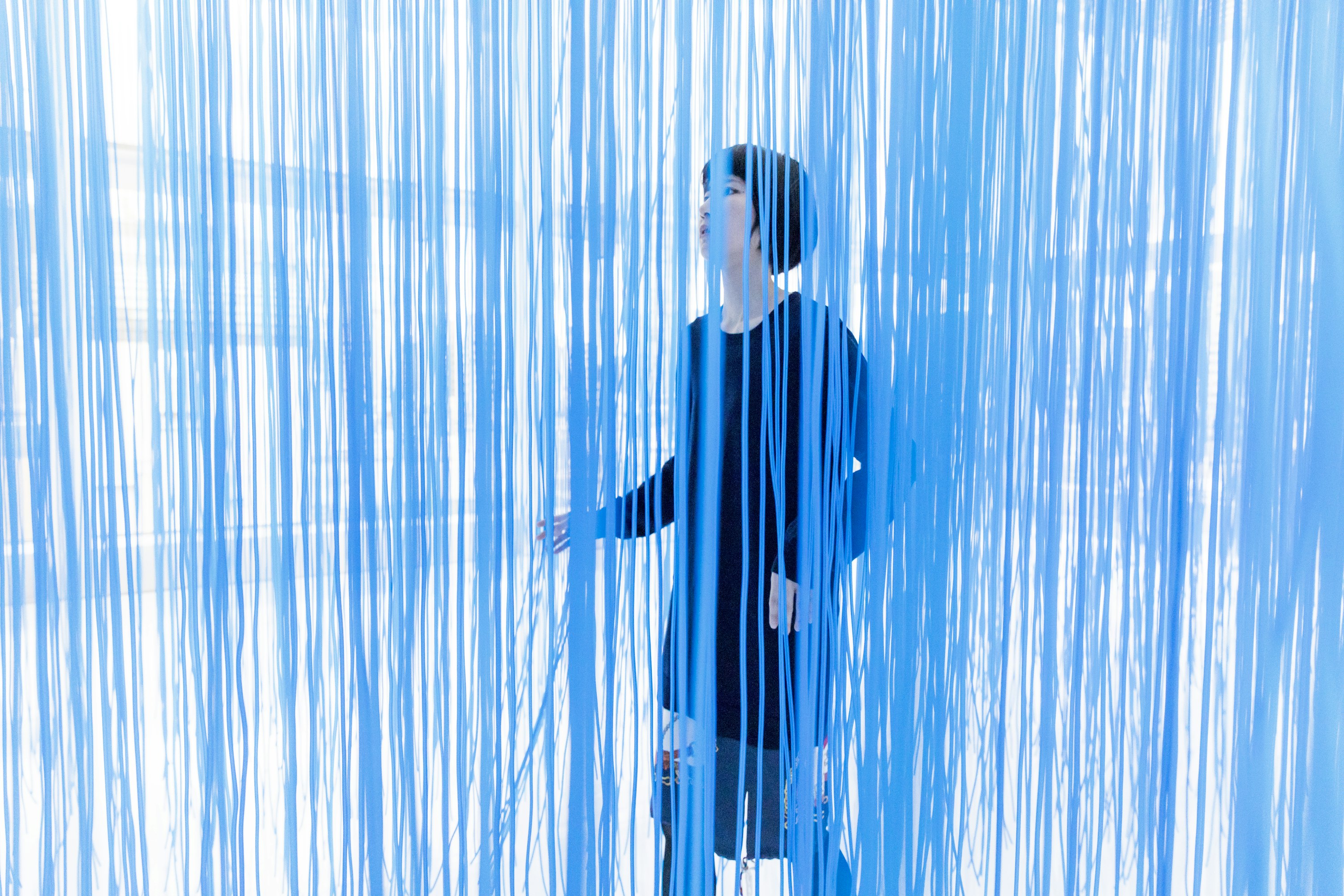Jesús Rafael Soto - Penetrable BBL Bleu

© Adagp, Paris 2018 Crédit photo : © Jeremie Souteyrat / Louis Vuitton
- Place
-
Espace Louis Vuitton Tokyo
-
Omotesando Bldg 7F 5-7-5 Jingumae Shibuya-ku
-
Tokyo 150-0001
- Phone
-
+81 3 3515 0855
For its sixth exhibition within the framework of the Fondation Louis Vuitton’s “Hors-les-murs” programme, the Espace Louis Vuitton Tokyo is pleased to present a specific installation by the late Jesus Rafael Soto: Pénétrable BBL Bleu. This programme has been showcasing unseen holdings from the Collection at the Espaces Louis Vuitton Tokyo, Venezia, Munich and Beijing over these past three years, thus carrying out the Fondation’s intent to realize international projects and make them accessible to a broader public.
Jesús Rafael Soto was a Venezuelan artist who was best known for his kinetic sculptures and large scale optical installations. Born in 1923 in Ciudad Bolivar, Soto remained in Venezuela for his formative years, before moving to Paris in 1950 where he would remain for the rest of his life, while keeping a workshop in Caracas from 1975 onwards. Very early on, he attached himself to post-war avant-garde modernism and became part of the abstract art circles. His participation in the Salon des Réalités Nouvelles in 1951, followed by his involvement in the celebrated exhibition Le Mouvement at the Galerie Denise René in Paris in 1955 alongside Marcel Duchamp, Alexander Calder, and Victor Vasarely, bears witness to this commitment. By the late 1960s, Soto was known as a leader in kinetic art, with works that were remarkable for their illusions of sensory vibrations.
Dealing with pure abstraction, colour theory, and the dynamic between background and foreground, throughout his oeuvre Soto was consistently interested in the question of multiples and the possible modification of space through optical movement. His career was marked by several series of works: from the 1950s the artist was painting on plexiglass creating optical illusions;
followed by the Ecritures (Writings) series from 1963 where he began moving into physical experiments in three-dimensional spaces. The Vibracións (Vibrations) series saw the beginning of Soto’s kinetic art works, which extended throughout the 1960s when he was using iron wire or hanging rods to create vibrations and sounds within the space. Finally, the well-known Pénétrable series began in 1967 and continued until the end of his career.

Jesús Rafael Soto, Penetrable BBL Bleu, 1999
Ed. Avila 2007, PVC, métal © Adagp, Paris 2018.

© Adagp, Paris 2018 Crédit photo : © Jeremie Souteyrat / Louis Vuitton
Each Pénétrable was created as an immersive installation consisting of volumes suspended in space, made of hundreds of thin vertical rods that the visitor is called upon to traverse. Referred to by the artist himself as a “revelation of sensitive space” he would continue to create many versions, featuring various sensations, sometimes including sound. From one series to the next, the “impression” of movement, generated by repetitions of shapes and colours, gave way to genuine optical illusions that increased the vibratory and dynamic impact of the works: moving from optical art into kinetic art and ultimately transforming the relationship between art and audience.
The Espace Louis Vuitton Tokyo invites you to experience this emblematic work from the Collection: Pénétrable BBL Bleu (1999, ed. Avila 2007). Encompassing the entire exhibition space, Pénétrable BBL Bleu is an interactive work that invites and requires the observer to be involved – to walk through the work and be immersed in its kinetic and optical functions. Through his Pénétrable series, Soto effectively reminds us that space is never empty, and invites the visitor to experiment with the material in order to see the invisible.
The artist
Jesús Rafael Soto
Jesús Rafael Soto was born in 1923 in Ciudad Bolívar, Venezuela, and died in 2005 in Paris, France. He was one of the main exponents of Kinetic art, the art of movement. He served as director of the Escuela de Bellas Artes in Maracaibo, Venezuela, then received a scholarship that allowed him to move to Paris in 1950. He took part in Le Mouvement (Movement) at Galerie Denise René in Paris, the 1955 exhibition that effectively launched Kinetic art. He also had works in the exhibitions of the ZERO group in an exploration of immateriality. In his earliest works, Soto was already endeavouring to move beyond representation of two-dimensional geometric shapes and introduced movement using the device of repetition. The viewer is central to Soto’s œuvre. In 1967, he produced his first Pénétrables, works composed of metal rods and nylon strands hanging in space.
The first major solo exhibitions of Soto’s work took place in 1968, at the Kunsthalle in Berne, Switzerland, and the Stedelijk Museum in Amsterdam, the Netherlands. More solo exhibitions followed at the Musée d’Art Moderne de la Ville de Paris in 1969; the Guggenheim Museum in New York City, USA, in 1974; and, the Museo de Arte Contemporáneo de Caracas, Venezuela, in 1983. More recent Soto-centred exhibitions include those at the Musée du Jeu de Paume in Paris in 1997; the Centro Cultural del Conde Duque in Madrid, Spain, in 1998; a major traveling retrospective exhibition in 2005 entitled Visión en Movimiento at the Museo Tamayo, Mexico; the Proa Foundation, Argentina; and the Galleria d’Arte Moderna e Contemporanea, Bergamo, Italy.
Soto was commissioned to make numerous monumental works for public spaces and buildings around the world, including at the UNESCO headquarters in Paris, 1969; the Teatro Teresa Carreño in Caracas, 1972; the Grand Hall de la Régie Renault in Paris, 1975; the Royal Bank of Toronto, Canada in 1977; the Centro Banaven in Caracas, 1979; and the Centre Pompidou in Paris, 1987. In 1973, with the aid of his architect friend Carlos Raul Villanueva, Soto built the Museo de Arte Moderno Jesús Soto in his native city of Ciudad Bolivar to house the sizeable collection of geometric and kinetic works he amassed throughout his life. The museum also contains many of Soto’s own most important works.


